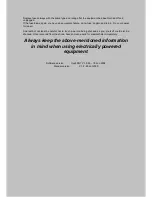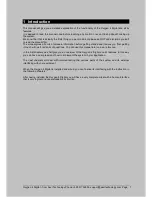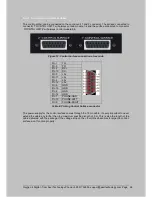
Network Basics
TCP/IP is a protocol that is well known in WAN structures. This means there are many Data Link &
Physical Layers that can carry TCP/IP. In WAN structures the Cobranet protocol is not known, so that
will only function on the Ethernet based networks.
What happens if a destination of a TCP/IP envelope is outside the Ethernet network? The TCP/IP
envelope will be redirected to the ‘gateway’. This gateway takes the TCP/IP packet out of the Ethernet
envelope and repacks the TCP/IP envelope in a new envelope for the new protocol (for example DSL
or ISDN)
This explains how it's possible to have TCP/IP data over WANs and Cobranet only over LANs.
7.3 TCP/IP Network Addressing
The TCP/IP protocol is a higher-level networking protocol and has its own system of addresses called
IP addresses. TCP/IP, like other network protocols, has its own addressing scheme and data
structure. Thus, contained within the Ethernet payload is another series of fields containing IP source
and destination address information, as well as another payload containing TCP data. This “nesting”
within the Ethernet payload continues until the protocol(s) being transported is completely defined.
The most important thing to understand is that the networking protocol in use is completely
independent of Ethernet. Ethernet is simply the delivery system, and it doesn’t know or care about the
networking data that it’s carrying in its payload. This enables Ethernet to carry many different
networking protocols on the same network. It is left up to the networking software running on the
receiving system to understand the networking protocol information extracted from the Ethernet
payload field.
7.3.1
IP Address
An IP address is a unique identifier for a device on a TCP/IP network. Within an isolated network, it is
possible to assign IP addresses at random as long as each address is unique. However, connecting a
private network directly to the Internet requires using registered IP addresses (called Internet
addresses) to avoid duplicates. An IP address is a 32-bit numeric address (four sections of 8 bits
each) written in “dotted decimal notation”. The number in each section can range from 0 to 255. The
address consists of 2 parts, the network number (or as it is more commonly referred to today, the
network prefix) and the host address. The host address is the unique address of the network node,
while the network number identifies the network on which the host resides. Each host on a network
shares the same network number but must have a unique host address. Likewise, any two hosts can
share the same host address as long as they have different network numbers. The InterNIC
Registration Service originally assigned Internet addresses from three classes, where each class fixes
the boundary between the network number and the host address at a different point within the 32-bit
address. This is known as “classful” addressing.
Class A - 16 million hosts on each of 127
networks (1.xxx.xxx.xxx - 126.xxx.xxx.xxx)
Class B - 65,000 hosts on each of 16,000
networks (128.0.xxx.xxx - 191.255.xxx.xxx)
Class C - 254 hosts on each of 2 million
networks (192.0.0.xxx - 223.255.255.xxx)
Unfortunately, no one expected the Internet to grow as quickly as it did, and the limitations and
inflexibility of this method of addressing were unforeseen. Adding another level to the address
hierarchy, the subnet, helped to temporarily overcome many of these shortcomings.
Oxygen 4 Digital - from Axel Technology Phone +39 051736555, [email protected] Page 15
Содержание Oxygen 4
Страница 1: ...Oxygen 4 Digital pag 1...
















































